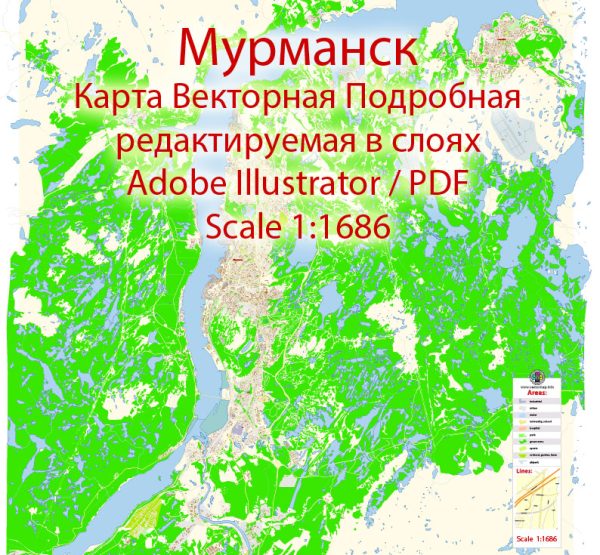Murmansk is a city located in the extreme northwest of Russia, near the borders with Norway and Finland. It is the largest city in the world located north of the Arctic Circle and serves as an important port on the Kola Peninsula. The city has a rich and unique history that has been shaped by its strategic location and its role as a vital northern port.
Here’s a brief overview of Murmansk’s history:
- Early Settlements: The area around Murmansk was inhabited by indigenous Sami people for centuries. However, the modern history of the city began with the establishment of a small settlement in 1915 during World War I. The construction of the Kola Peninsula Railway and a port was initiated to facilitate the transportation of war supplies.
- World War I and the Russian Civil War: Murmansk played a significant role in World War I as a key supply route for the Allied Powers. After the war, it saw fighting during the Russian Civil War, with British and French intervention forces stationed in the area.
- Soviet Era: Murmansk’s significance grew during the Soviet era, as it became a major naval base and an essential point for shipping goods to and from the ice-free northern ports. The city was extensively developed, and its population expanded. During World War II, Murmansk was a crucial destination for the Arctic convoys that supplied the Soviet Union with much-needed aid from the Western Allies.
- The Cold War: During the Cold War, Murmansk was a strategically important military and naval base for the Soviet Union. It was the center of a closed administrative-territorial formation, which means it was restricted to foreigners. The city remained closed until the 1990s, and it was a hub for Soviet nuclear-powered icebreakers and submarines.
- Modern Times: After the dissolution of the Soviet Union, Murmansk, like many Russian cities, faced economic and social challenges. However, it has continued to be an important center for the Russian Arctic and the Northern Fleet of the Russian Navy. The city is known for its distinctive Arctic architecture and unique culture.
Today, Murmansk is a vibrant regional center with a diverse population and a growing tourism industry, attracting visitors interested in experiencing the Arctic environment. The city’s history, geography, and strategic importance continue to shape its identity and development.


 Author: Kirill Shrayber, Ph.D.
Author: Kirill Shrayber, Ph.D.